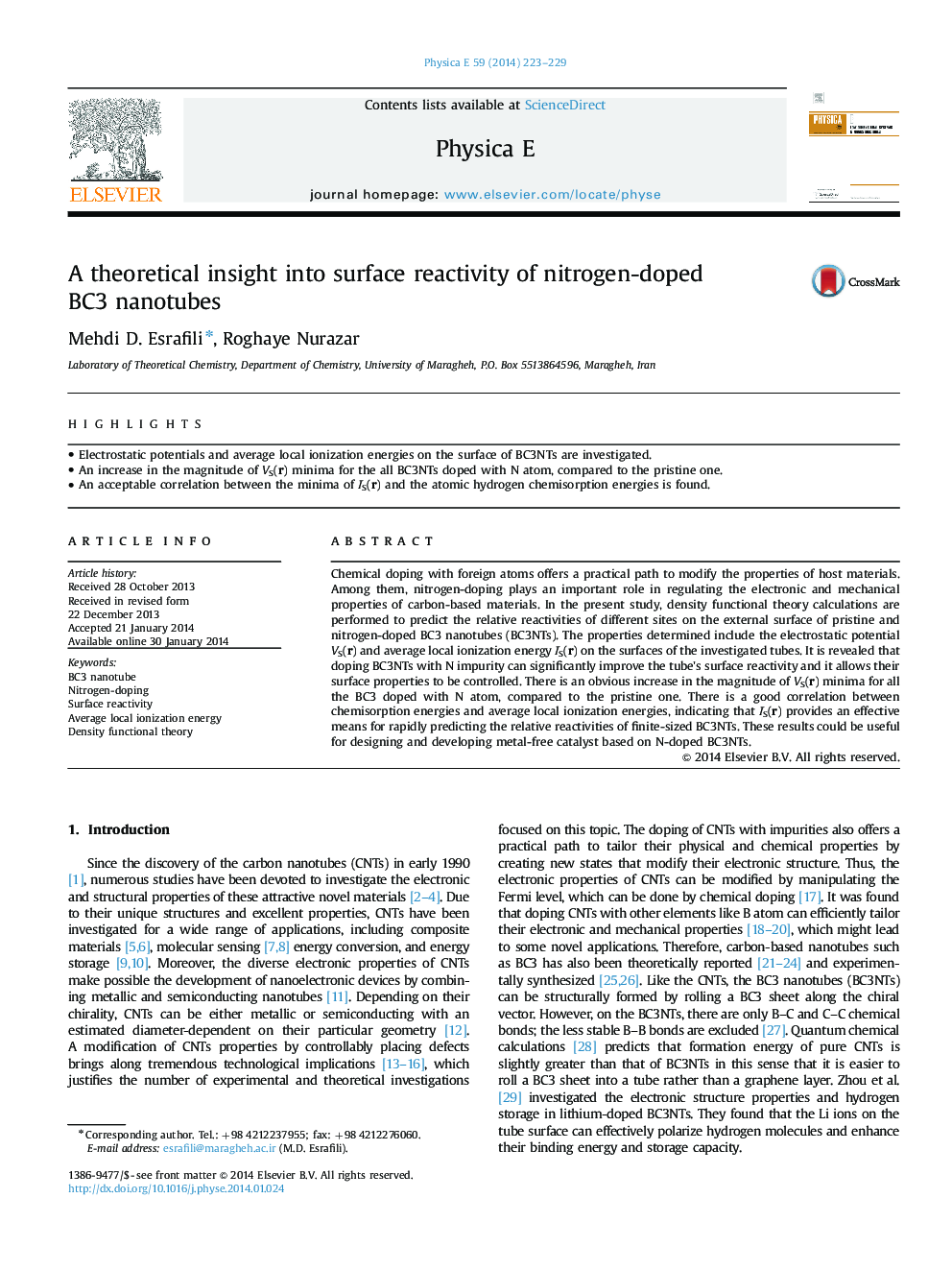| کد مقاله | کد نشریه | سال انتشار | مقاله انگلیسی | نسخه تمام متن |
|---|---|---|---|---|
| 1544540 | 1512890 | 2014 | 7 صفحه PDF | دانلود رایگان |

highlights
• Electrostatic potentials and average local ionization energies on the surface of BC3NTs are investigated.
• An increase in the magnitude of VS(r) minima for the all BC3NTs doped with N atom, compared to the pristine one.
• An acceptable correlation between the minima of ĪS(r) and the atomic hydrogen chemisorption energies is found.
Chemical doping with foreign atoms offers a practical path to modify the properties of host materials. Among them, nitrogen-doping plays an important role in regulating the electronic and mechanical properties of carbon-based materials. In the present study, density functional theory calculations are performed to predict the relative reactivities of different sites on the external surface of pristine and nitrogen-doped BC3 nanotubes (BC3NTs). The properties determined include the electrostatic potential VS(r) and average local ionization energy ĪS(r) on the surfaces of the investigated tubes. It is revealed that doping BC3NTs with N impurity can significantly improve the tube׳s surface reactivity and it allows their surface properties to be controlled. There is an obvious increase in the magnitude of VS(r) minima for all the BC3 doped with N atom, compared to the pristine one. There is a good correlation between chemisorption energies and average local ionization energies, indicating that ĪS(r) provides an effective means for rapidly predicting the relative reactivities of finite-sized BC3NTs. These results could be useful for designing and developing metal-free catalyst based on N-doped BC3NTs.
Journal: Physica E: Low-dimensional Systems and Nanostructures - Volume 59, May 2014, Pages 223–229